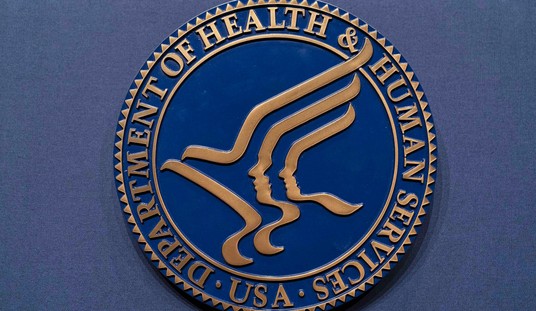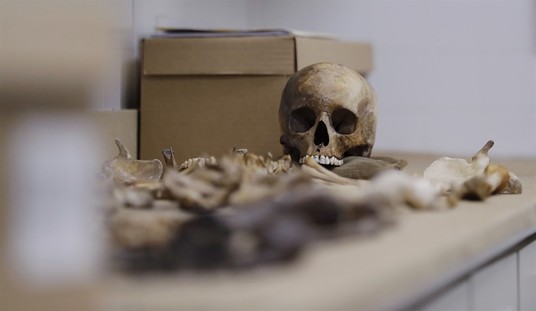
Iranian supreme leader Ayatollah Ali Khamenei delivers a speech on the 17th anniversary of death of the late revolutionary founder Ayatollah Khomeini, in his mausoleum just outside Tehran, Iran, Sunday, June 4, 2006. Khamenei, warned Sunday that energy supplies from the Gulf region would be disrupted if Iran came under attack from the United States and insisted his country would not give up the right to produce nuclear fuel. (AP Photo/Vahid Salemi)
Ayatollah Ali Khamenei, the Supreme Leader of Iran, assumed this position in June 1989 upon the death of Ayatollah Khomeini to whom he’d been a close ally. Prior to this, he had served as President from 1981-1989. Khamenei was deeply involved in the 1979 Iranian Revolution and has served in key leadership roles since the founding of the Islamic Republic.
Although Qasem Soleimani may have been a bit more colorful than the Ayatollah, it’s safe to say that after leading Iran for four decades in various capacities, his loss would be felt as deeply by the regime as the death of Soleimani.
The truth is that Khamenei is approaching the age of 81 and according to reporters at The Washington Post and Fox News, he is rumored to have cancer. Al Jazeera reported two years ago, he was in poor health. Either way, this man is not going to live forever.
The loss of Soleimani, especially coming so unexpectedly, dealt a blow to the regime. Yes, they quickly named a replacement, Brigadier General Esmail Qaani, but how effectively will he be able to fill the shoes of the legendary general? The leaders of state-sponsored proxy groups such as Hezbollah and Hamas were directed by and were loyal to Soleimani with whom they had a long history. How will that dynamic change under Qaani’s leadership?
Likewise, the death of Khamenei would strike another serious blow to an already weakened regime. Although his death would come without the element of surprise, it would be take some adjustment to get used to a new Supreme Leader. Complicating matters, the man who was expected to one day succeed Khamenei, Ayatollah Mahmoud Hashemi Shahroudi, died of cancer a year ago. The fact that there may be no clear “heir apparent” could lead to power struggles among current leaders.
There are other signs that the regime’s hold on power may be weakening. U.S. sanctions have badly crippled the Iranian economy causing a deep recession.
Protests following a 50% increase in the price of fuel in November quickly morphed into demonstrations where many Iranians “called for an end to the Islamic Republic’s government and the downfall of its leaders.”
“Security forces opened fire on unarmed protestors.” Reuter’s reported that at least 1,500 Iranians were killed and even more wounded as the government tried to crush the uprisings that threatened to topple it.
They shut down the internet for five days.
Witnesses told The New York Times that in Mahshahr, they had seen Islamic Revolutionary Guards Corps members “surround, shoot and kill 40 to 100 demonstrators — mostly unarmed young men — in a marsh where they had sought refuge.” Sadly, there were many similar stories.
An op-ed appeared in The Washington Post on Monday written by Iranian journalist Masih Alinejad. She wrote:
The authorities forced many families to pay blood money in order to receive the body of their loved ones from the morgue. Some even had to sign official forms waiving the right to hold a public funeral as a condition of getting bodies returned.
Two weeks ago, the parents and nine other family members of Pouya Bakhtiari, a 27-year-old engineer who was killed during the protests, were arrested to stop them from having funeral services. Two days later, on Dec. 26, thousands of security forces using armored cars, water cannons and even helicopters were deployed to stop mourning ceremonies for some of the victims.
Many have said this was the most violent period in the country since the 1979 Iranian Revolution.
How long will it take before a resistance group rises up in an organized way against the current government to demand their freedom? Will they wait until Khamenei dies either from old age or cancer?
There are Iranian opposition groups preparing to oust the current regime. One such group, called the Mujahedin e-Khalq (MEK), currently based in rural Albania, has been “preparing for the overthrow of the clerical regime for several years.” MEK currently has approximately 3,400 members.
What better time will there be than right now, while the regime is reeling from the death of a key leader, their economy is a shambles, and their Supreme leader is aging and possibly seriously ill, to act?













Join the conversation as a VIP Member